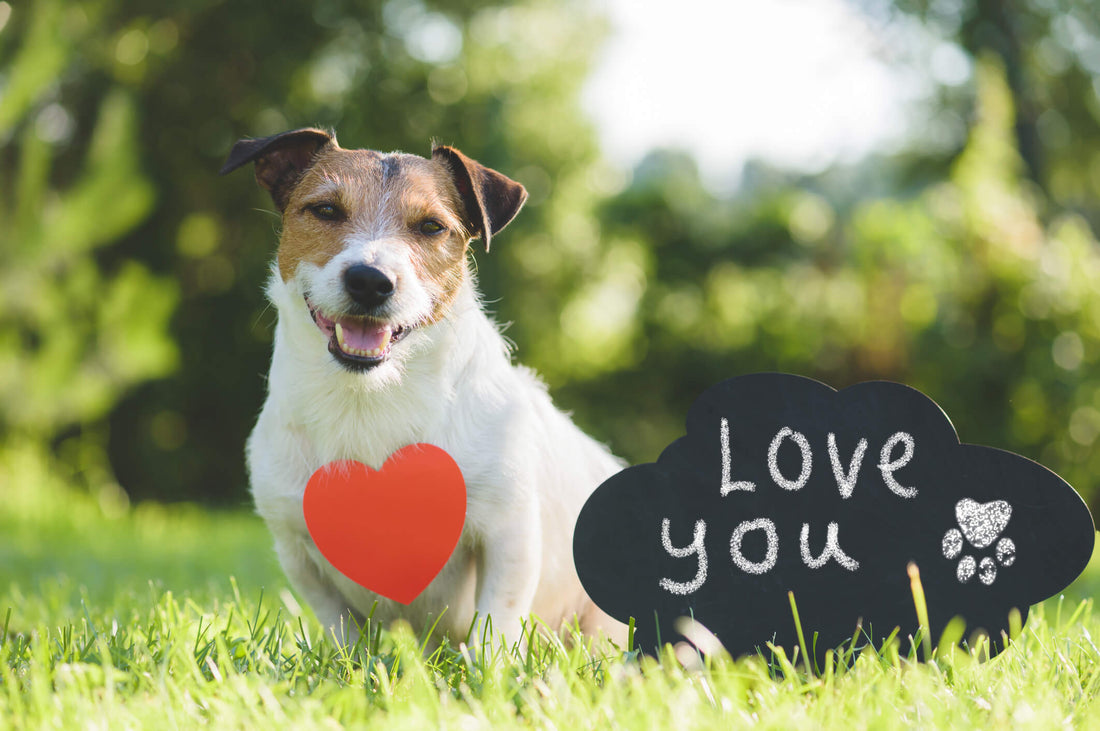
New Study Shows that Dogs Do Understand “I Love You”
We pet owners love our furry friends very much—and we tell them so every single day (often way more than once!). But since dogs don’t speak the same language we do, it’s always been questioned whether dogs really understand what we mean when we express our love.
As it turns out, a new study indicates that dogs do understand the words “I love you”—at least, to some degree!
“I love you” raises your pup’s heart rate
A recent study conducted by Canine Cottages suggests that dogs experience a physiological response to the words “I love you.” On average, a dog’s heart rate increased by 46 percent after hearing those three special words.
As part of the study, four dogs were monitored for heat rate over the course of a week. The researchers tested numerous scenarios, including the dogs at rest, seeing their owners, cuddling with their owners and being told “I love you.” While their average heart rates spiked after hearing an expression of love, the dogs’ heart rate slowed (by 22 percent) when they cuddled with their owners.
These results suggest that cuddling produces feelings of contentment in dogs, allowing them to relax, while hearing “I love you” produces excitement!
Dogs and human speech
There’s still a lot to learn about how dogs process words spoken to them by humans. It’s clear that dogs are capable of understanding some words over time, evidenced by their excitement at the word “park” or their dutiful retrieval of their favorite ball when instructed. Experts believe that dogs are capable of attributing labels to objects or actions, allowing them to understand specific words.
But in the case of things like “I love you,” what might be triggering your pet’s excitement even more is the way the words are said. In general, dogs react positively to praise. Every “Good boy!” or “Great job!” is sure to get their tail wagging. A large part of this reaction is based in the intonation of the phrase—the emotional force behind the words.
Dogs process the intonation and the meaning of words separately, which is the same as what humans do. This means that they understand words that are spoken in a higher-pitched, happier voice (or “baby talk”) differently than those spoken in a neutral tone or a loud, stern voice.
Additionally, research has shown that dogs are highly motivated by praise, sometimes even more so than food. So, saying “I love you!” in a happy tone might be at least part of the reason why your dog is feeling the love.
.jpg)
Other ways to tell your dog you love them—in their language
There is much to learn about dogs and their ability to process our human words, and even more to learn about how they interpret meaningful phrases like “I love you.” But words are far from the only things we can use to express love between us and our furry friends!
Dogs have their own language when it comes to love. That same study from Canine Cottages indicated 10 different ways dogs show that they love us. You’re probably familiar with many of these, including giving licks and kisses, cuddling, wagging their tail and exposing their bellies. Others include bringing you their favorite toy, showing aggression as a way to protect you and even destroying objects in the home. A lot of these displays of affection come down to body language—the prominent way dogs communicate with us.
So, in addition to telling our dogs we love them multiple times a day, it’s a good idea to incorporate other displays of affection that don’t involve words to make sure our pups really get the message. Here are a few ways to show—not tell—your dog you love them.
- Cuddle: We don’t have many ways to match our love language to our dog’s, but cuddling is one that goes both ways! Just as dogs will cuddle you to show their love, you should cuddle them to show yours. Curl up on the couch together or give them a loving embrace before bedtime to drive your affection home.
- Touch them: Stroking your dog’s head, giving them a massage and brushing their fur all contribute to the release of happy hormones for both you and your pup. Physical touch is important for dogs, but make sure it’s a touch they enjoy. Avoid making them feel trapped with a hug or getting too rough and agitating them.
- Offer stability: One single display of love will mean much less to your pup than a lifetime of health and stability. Creating and sticking to a routine helps lower your dog’s stress levels and helps them build loyalty and trust, since they understand that you are there to meet their needs.
Letting your dog know you love them—whether through actions or words—is sure to brighten their day and build a stronger bond between you. Find ways to speak your dog’s language and help them feel the love every single day!


